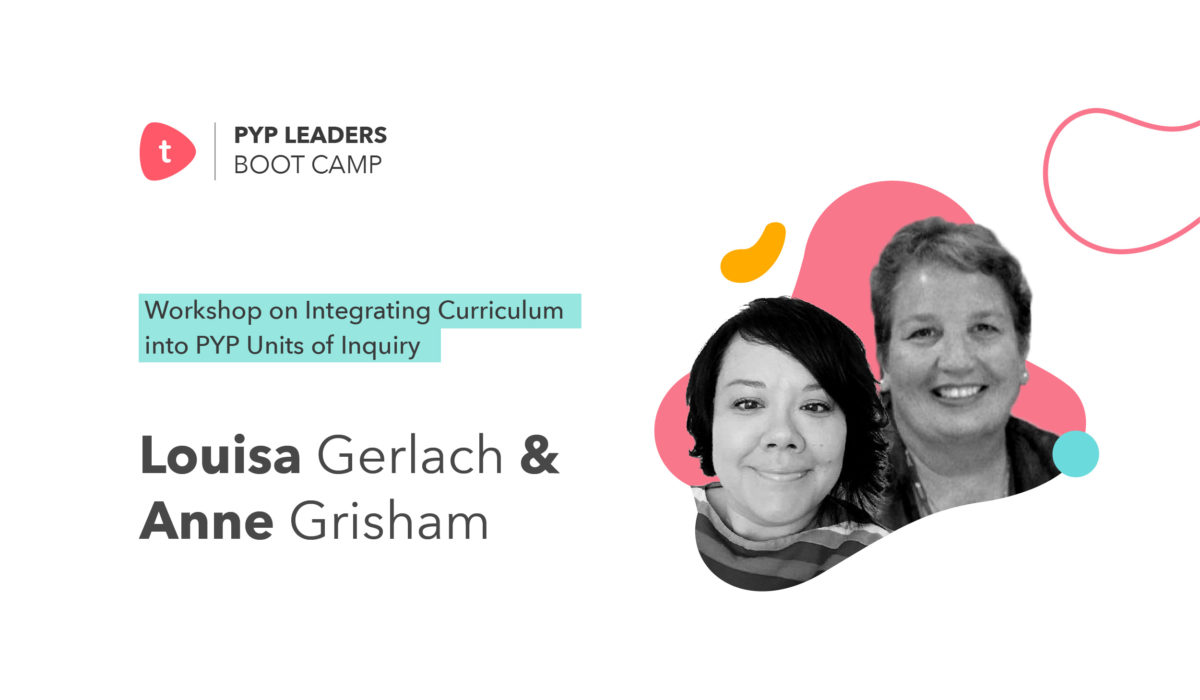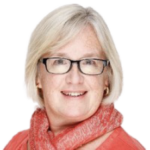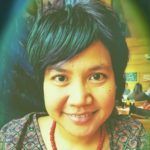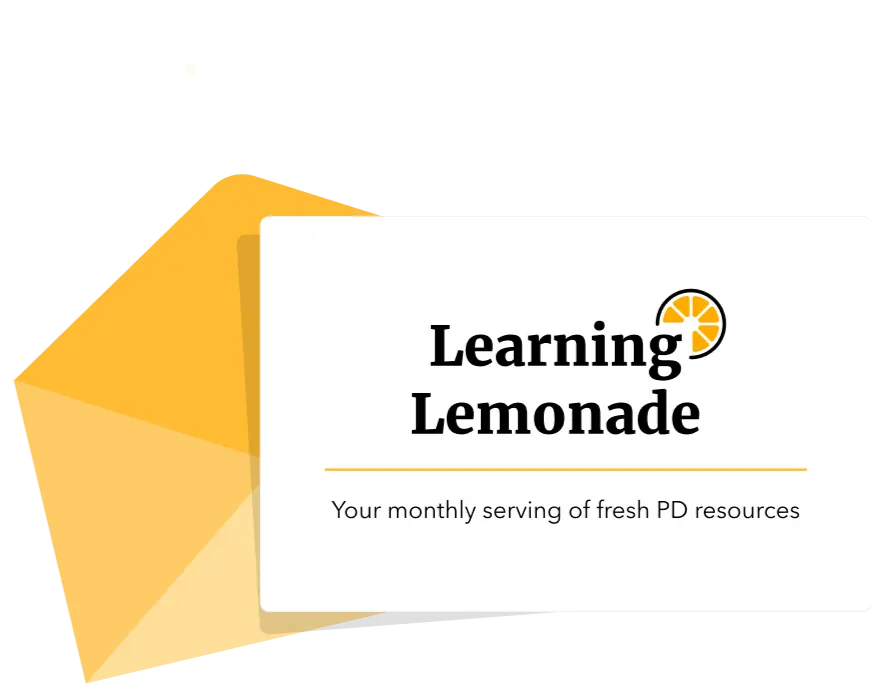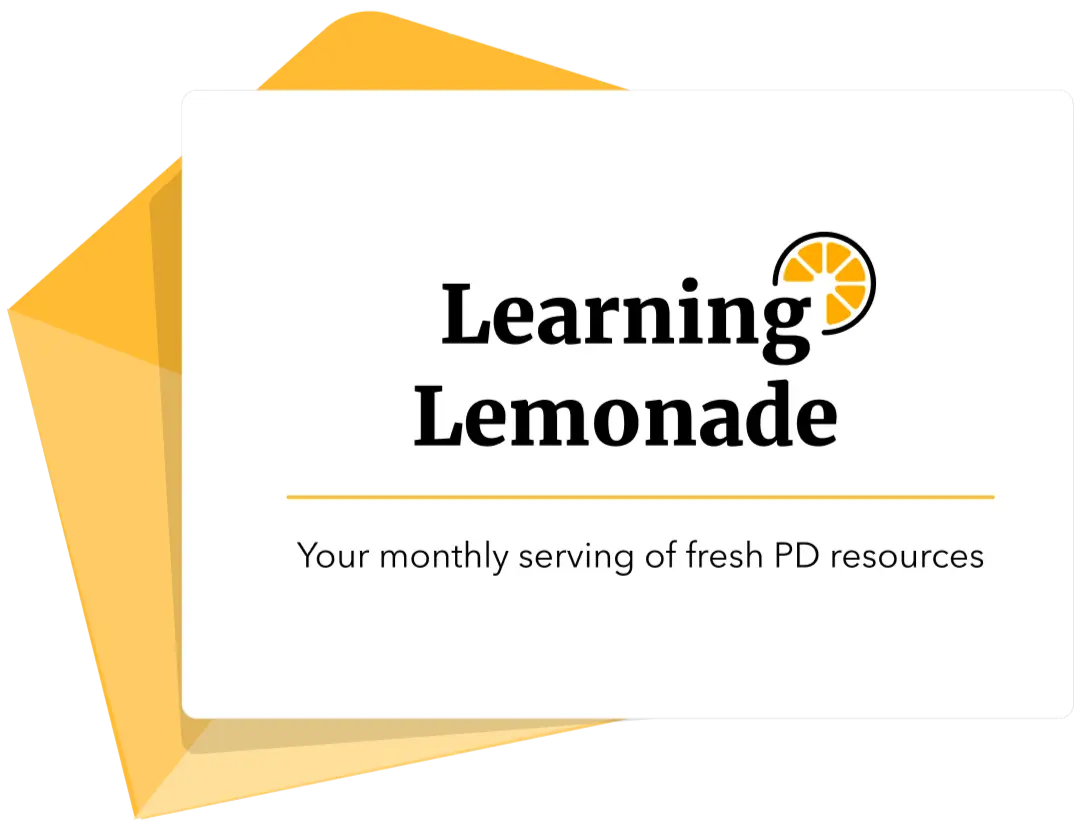6 Strategies to Become an Assessment Capable Practitioner
“[Assessment] goes to the heart of what matters in education:
…the ultimate goal of student learning” – Marguerite Clarke
The word assessment is not new to educators. Yet, many practitioners, parents and students are still under the misconception that assessment is about tests, evaluations and grading.
It is much more than that. Assessment is so intertwined with learning that it has become a part of the process of planning, teaching and learning. One can’t be separated from the other.
In this blog post, we will be examining the definition of ASSESSMENT and looking at the WHY, or purpose, of assessment. Then, we will focus on WHAT we are assessing and HOW we can assess it. Along the way, we hope to provoke you to develop your own assessment capabilities.

1. Define assessment
We should go back to the etymology of the word “assessment” which comes from the Latin verb “assidere,” meaning, “to sit with.” This reminds us that assessment is something teachers do with and for students rather than to students. This places the students at the centre of the process. With the teacher’s guidance, they should be involved and play active roles throughout the assessment process.
How do we do that? What capabilities should teachers have in order to nurture assessment capable students?
At our Toddle Talks webinar on the subject, we asked the participants to share words and phrases that relate to assessment. This is the outcome of their sharing.
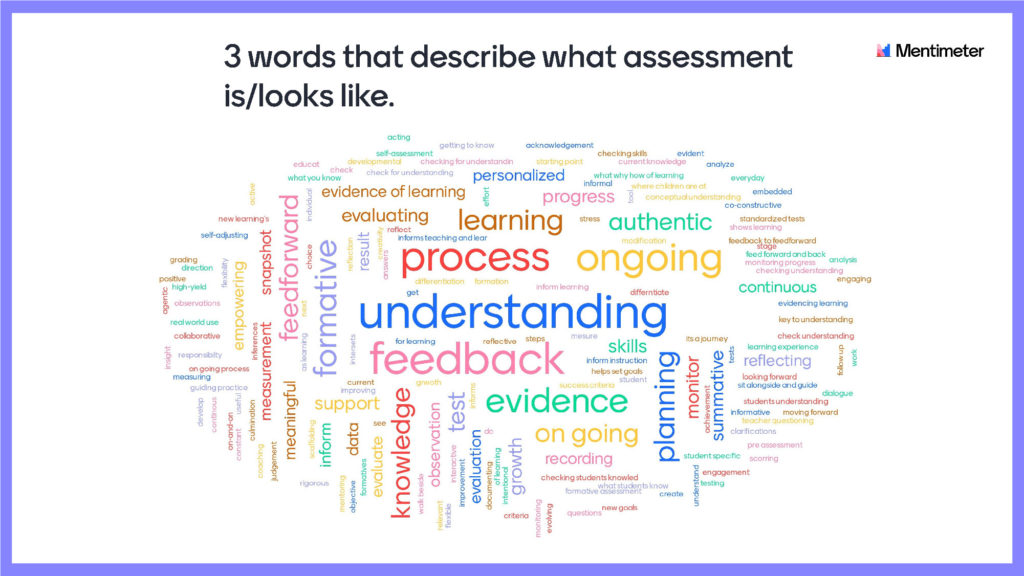
2. Clarify your understanding of assessment
In order to understand the process of assessment, we should go back to the WHY or the reason we assess. It is simply to inform teaching and learning.

Source: Dylan Wiliam – Formative Assessment Strategy
In order to do so, as teachers, we should know where the learning is going. This means we should know our curriculum. Our curriculum is the compass that guides us to plan the learning pathways with our students.
Next, we should know where the learner is now. Try to visualize the learning pit that’s created by James Nottingham. Where is the learner now? Using different assessment strategies and tools, we can gather data that informs our planning and supports students to set their own goals. This will help us and the students think of strategies that can be used to get where they should be.
3. Know how assessment practices have changed over time
Over the years, the practice of assessment has shifted from a more traditional way of assessing where the teacher essentially “does” the assessment to the student called, “Assessment OF Learning”. The student has no input in this type of assessment.
The shift to a more “enhanced” learning approach is when the student takes ownership of their learning in what is called, “Assessment FOR Learning”. The student self-assesses by reflecting on their learning and adjusting their thinking, thereby developing new understandings. The teacher is merely the ‘knowledge guide’ rather than the ‘knowledge holder.’
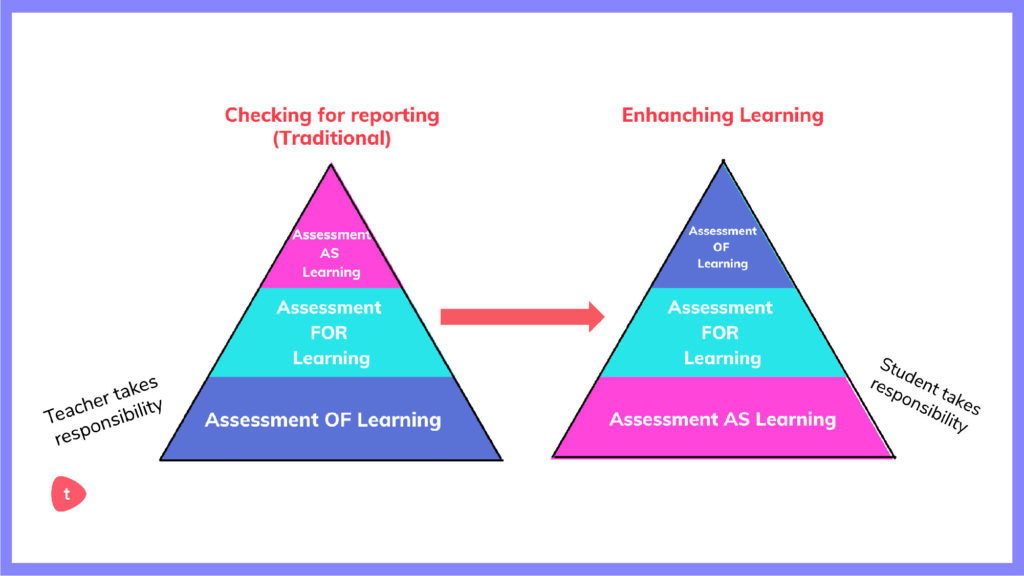
Source: http://etec.ctlt.ubc.ca/510wiki/Assessment_as_Learning Western and Northern Canadian Protocol (WNCP). (2006).
4. Understand the assessment process
Assessment is like an ongoing conversation where the teacher ‘walks beside’ the learner in a continuous conversation. The teacher adjusts their teaching and the student adjusts their learning as a result of the ongoing conversation. This results in what could be described as a ‘continuum of the stages of growth,’ as the learner develops their new understandings, skills and knowledge. Only the individual teacher will change over time as the student/learner moves along this learning journey.

When looking at assessment from the teacher’s view, engaging in the assessment is similar to the Visible Thinking Routine of, “See-Think-Wonder”.
Through learning experiences, we see how the students interact and show their understanding. We listen to their discussions. What do we notice as we observe this action? How do we record this data? How do we capture their thinking that is shown daily?
Within this modification of the ‘See-Think-Wonder’ routine, we simultaneously keep the 3 main questions: Where is the learning going? Where is the learner now? How do we get there? All of these ongoing questions lead to the ‘what’s next?’ point which supports our planning for teaching and supporting learning.
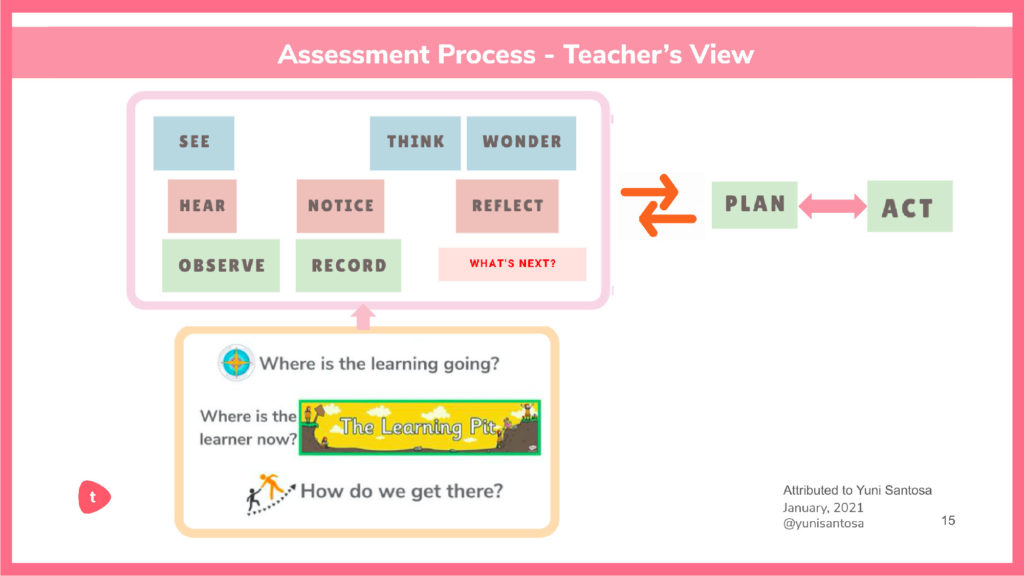
5. Put on the ‘noticing cap’ whilst assessing
Going back to our initial question, if we are an assessment capable practitioner, we should reflect on our own assessment practice. As we have shared earlier, the assessment process is an ongoing conversation that promotes the continuum of growth. It requires us, as teachers, to continuously and simultaneously reflect and ask questions about how we assess and what we assess.
Back in December, we had a chance to have a chat with Edna Sackson. It was a productive and inspiring conversation which she followed up by writing a blog post on what it means to be ‘assessment capable’. She shared provoking and reflective questions that assessment capable teachers (and learners) might ask themselves
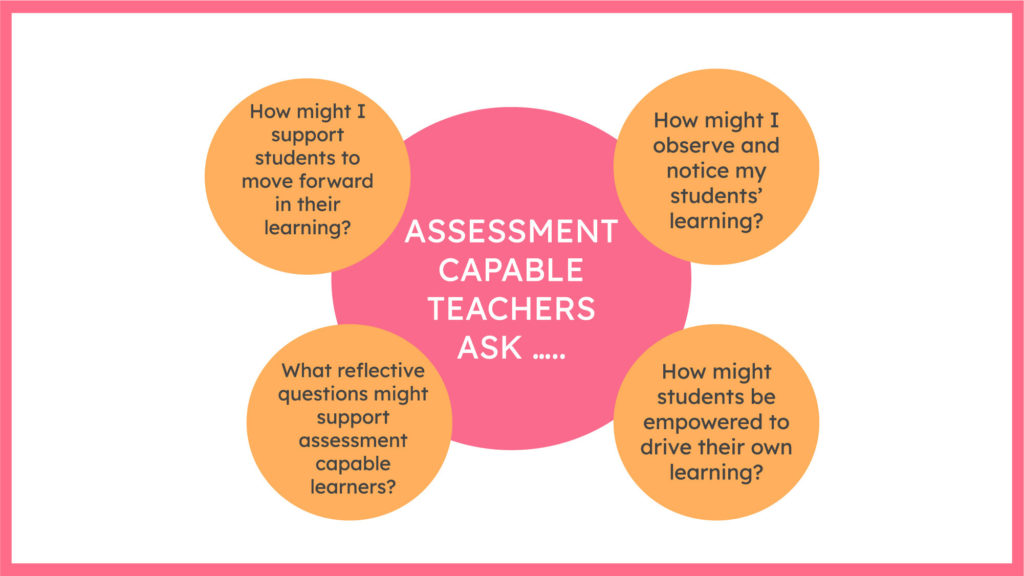
Attributed to Yuni Santosa & Mary Kay Polly
Source: ‘What does it mean to be assessment capable?‘
6. Explore assessment strategies and tools
So, what does assessment look like in practice? What kind of assessment strategies do teachers use to demonstrate that they are assessment capable teachers?
As Co-founder, Global Educator Collective, Kirsten Durward said, ‘Assessment is learning. Learning is assessment.’ They are not done separately. Let’s take a look at a few examples below that show how assessment and learning are intertwined.
- In this example shared by Levi Allison, students explore different stations and self assess which stations and activities they found easy, just right, and challenging. The teacher observes and gathers data to decide next steps.

- In this example of a Grade 3 Math assessment, the parent is a partner in the assessment to check for understanding about various multiplication strategies.

- In this example from Toddle, the teacher assesses the learner on the co-created rubric, after the students’ self-assessment. Co-creating rubrics with students allows them to become assessment capable and to develop their agency.

A few examples below show the connection between planning, teaching, learning and the assessment process in an inquiry-based approach. As Kath Murdoch in her book The Power of Inquiry mentioned, ‘Teachers who use an inquiry-based approach know that assessment is very much built into the way they plan and teach.’
- Using open-ended strategies provide teachers with clear information not only about what students know (knowledge) but also see how they apply the Approaches To Learning skills.
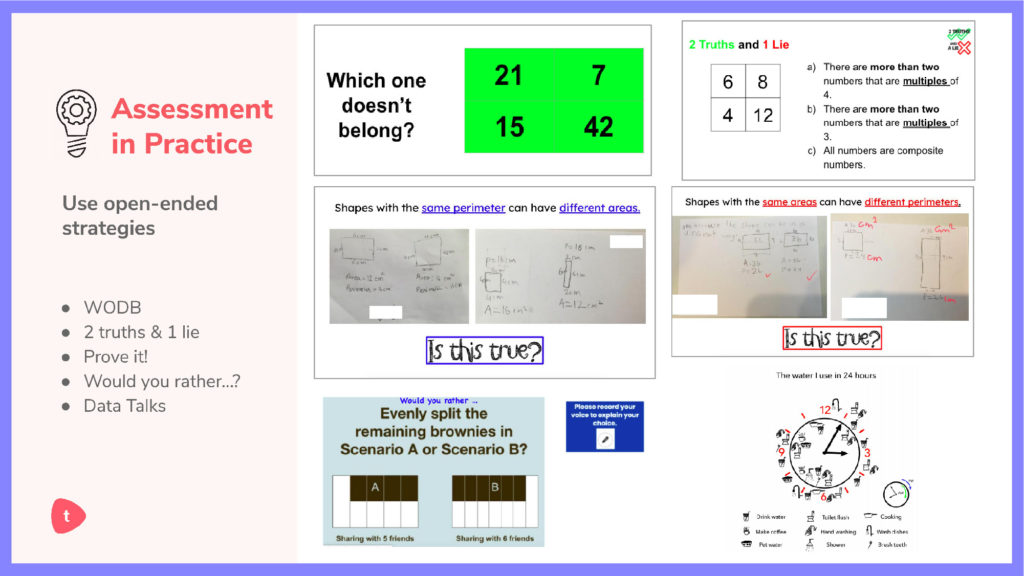
- Applying Visible Thinking Routine strategies from Project Zero will help effectively guide students to think and reflect on their learning.

During our valuable chat with Edna Sackson, she mentioned, ‘‘Everything is assessment!’ If teachers put on their ‘noticing’ cap and keep learning, teaching and assessing side-by-side, then everything is assessment. A few examples below show the connection between planning, teaching, learning and assessing, in an inquiry-based approach.
- In the example below on assessment language and the unit of inquiry by Cindy Kaardal, via Twitter, teachers assess students’ understanding of features of myths. Teachers encourage students to be creative and construct features in different ways rather than simply highlight/ point out the features.
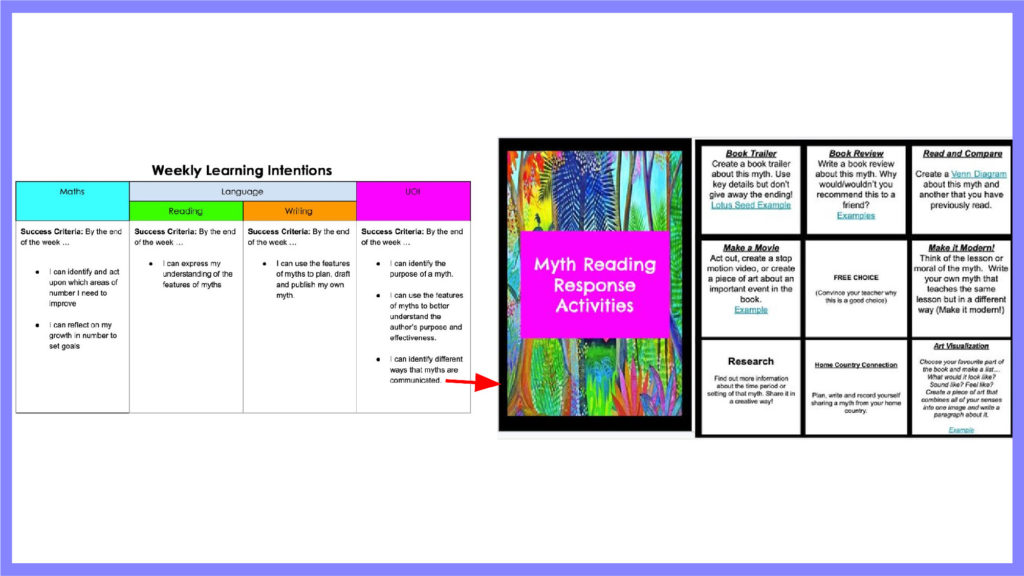
- In the example below from Cindy Kardaal, via Twitter, the learning goals are shared with students, to help them understand where they are going. At the start of the year, she shares a few learning intentions which students relate to their goals and they learn identifying strategies to achieve the goal. As they get familiar with this process, they can come up with strategies/steps by themselves.

- In this example from a student’s Toddle journal, students upload evidence of their learning and write a reflection. The teacher is able to write individual remarks underneath the co-created rubric. This allows students to ‘share their story of learning’ with their parents. This is also an example of documenting and reporting where the student is given feedback to feed forward.

- The example below shows how monitoring can be done on Toddle. Monitoring and analysing assessment is crucial for an assessment capable teacher so that they can evaluate and adjust their teaching to meet the needs of their students.
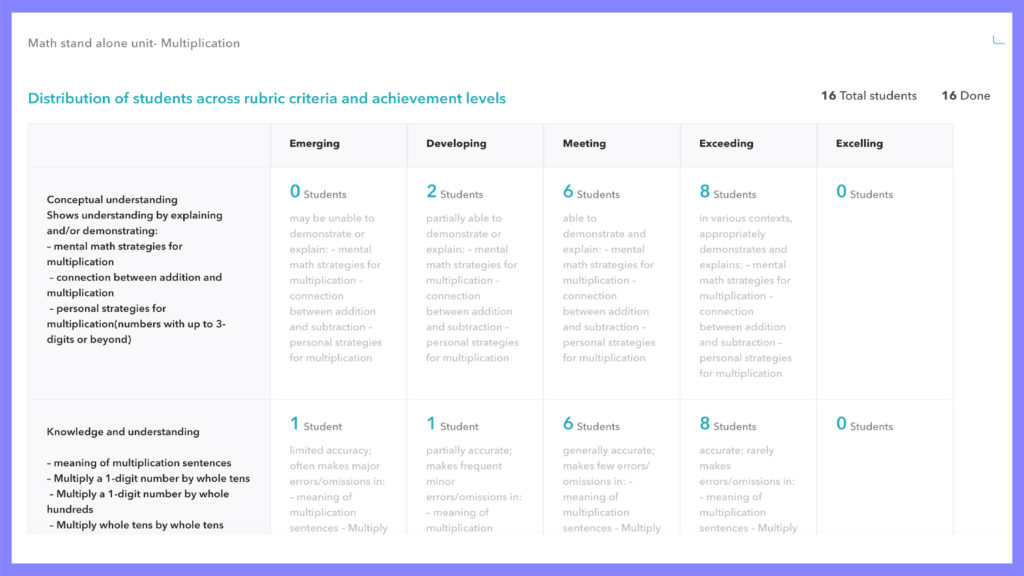
Now what?
Assessment should not be something that sends negative feelings and thoughts. If we, teachers, focus on the “why” of assessment, the process will become all about growth and not about failing and judgement.
So, are you an assessment capable practitioner? Let’s keep the thinking going! Always keep in mind that assessment is a process, rather than a product. This will place the students at the centre of not only the teaching and learning process but also the assessment process.
‘ … Learning benefits from ongoing constructive feedback and opportunities for growth,
not from continuous testing and judgement … ’
Dr. Helen Street – Contextual Wellbeing






